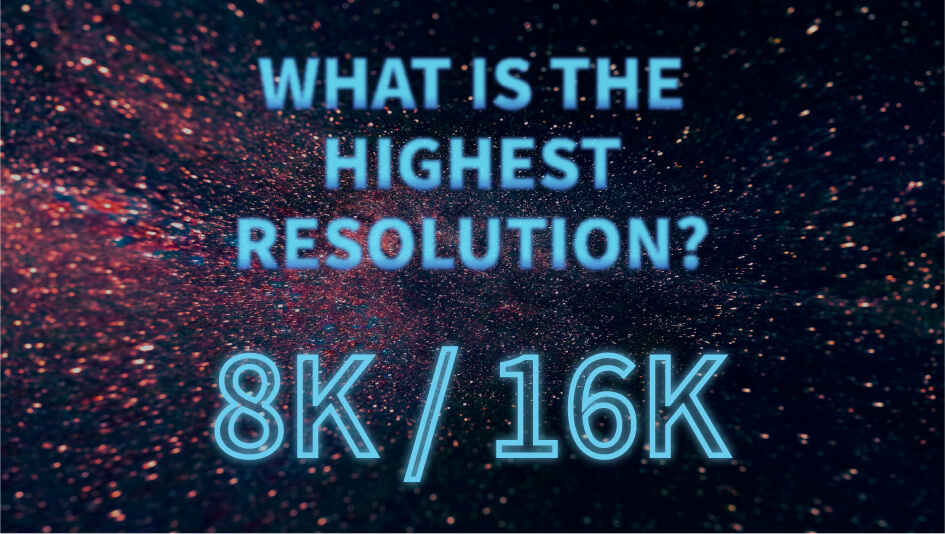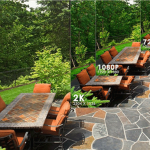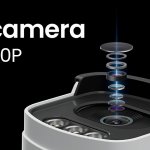When it comes to digital screens, photos, or security cameras, one question always sparks curiosity — what is the highest resolution?
From 1080p videos to stunning 8K displays, resolution has evolved faster than most of us realize. But beyond the buzzwords, what does it really mean? And how does higher resolution impact everyday life — especially in security and surveillance?
Let’s break down how resolution works, where technology stands today, and what the future might hold.
Contents
Why Resolution Matters
Resolution defines how sharp, detailed, and lifelike an image looks. In simple terms, it’s the number of pixels — the tiny dots of color that make up what you see on a screen. The more pixels, the more detail.
Imagine zooming into a photo of your backyard. With low resolution, you see blocky, blurry shapes. With higher resolution, you can spot details like blades of grass or even the reflection in a window.
For entertainment, high resolution brings cinematic visuals. For professionals, it means accuracy. And in security — it means trust. Every pixel counts when you’re identifying a face, reading a license plate, or spotting movement in the dark.
What Does “Resolution” Mean?
Technically, resolution refers to the number of pixels arranged horizontally and vertically. For example:
1080p (Full HD): 1920 × 1080 = 2.1 million pixels
4K (Ultra HD): 3840 × 2160 = 8.3 million pixels
8K (Full Ultra HD): 7680 × 4320 = 33.2 million pixels
Each step up adds exponential detail. Think of resolution like upgrading from a sketch to a photograph — the higher you go, the more the image resembles reality.
However, resolution alone doesn’t define image quality. Brightness, color depth, and compression also play key roles. That’s why even two “4K” cameras can deliver vastly different results depending on the sensor, lens, and processing power.
From 1080p to 16K: The Evolution of Resolution
The journey from standard definition (SD) to ultra-high-definition (UHD) is a story of constant innovation.
Early 2000s: 480p and 720p TVs brought the first taste of “HD.”
2010s: 1080p became mainstream, marking the rise of Blu-ray and high-definition broadcasting.
Mid-2010s: 4K entered living rooms, offering four times the pixels of 1080p.
2020s: 8K displays emerged — though few homes actually need or can fully use that level of detail yet.
And beyond that?
Yes, 16K exists. With a massive 15360 × 8640 pixel grid, it’s currently used only in experimental or commercial setups — like digital signage, research labs, and film production.
Most consumers won’t need 16K anytime soon, but it shows how far technology can go. The challenge now isn’t creating higher resolutions — it’s delivering them efficiently, without overwhelming storage and bandwidth.
What Is the Highest Resolution Available Today?
In technical terms, 16K is the highest publicly demonstrated resolution to date. A 16K display delivers over 132 million pixels — that’s 16 times more detail than a 4K screen.
However, the practical highest resolution for consumers remains 8K, which balances stunning detail with realistic data requirements. Watching or recording true 8K content demands powerful hardware, high-speed internet, and massive storage — often hundreds of gigabytes for a single video.
For most users, 4K still represents the “sweet spot” of visual quality and efficiency. Whether it’s a TV, smartphone, or security camera, 4K offers razor-sharp detail without pushing hardware to its limits.
Why Resolution Matters for Security Cameras
Resolution isn’t just about entertainment — it’s a critical factor in safety and security.
When something happens, the details captured by a camera can make all the difference. A 720p video might show that someone entered your yard; a 4K video can show who it was.
Higher resolution brings:
Clear identification: Faces, license plates, and objects remain readable even when zoomed in.
Wider coverage: One high-resolution camera can monitor more area without losing detail.
Better evidence: Crisp, detailed footage is more reliable in investigations.
At ZOSI, our 4K Ultra HD security cameras take advantage of this balance — capturing vivid details day and night, with smart AI motion detection and remote viewing. You see more, with less guesswork.
4K vs. 8K Cameras: Do You Really Need 8K?
It’s tempting to think that bigger numbers automatically mean better results. But when it comes to resolution, it’s about fit for purpose.
4K cameras already provide enough detail for most homes, offices, and retail environments. They deliver crisp images while keeping file sizes and streaming smooth.
8K cameras offer unmatched clarity, but they also require powerful processors, large storage capacity, and fast network speeds — which can make them impractical for general users.
Unless you’re monitoring large public areas, industrial zones, or critical infrastructure, 4K remains the smart choice. It hits the perfect balance between performance, cost, and convenience.
The Future of Resolution
Where does resolution go from here? The next breakthroughs may not come from simply adding more pixels, but from making each pixel smarter.
Emerging technologies are shifting focus toward:
AI-enhanced upscaling: Software that uses machine learning to “fill in” missing details, turning lower-resolution footage into sharper visuals.
Dynamic compression: Smarter ways to store and transmit large video files without losing quality.
Improved low-light sensors: So even in darkness, high resolution truly delivers.
Hybrid AI analysis: Cameras that interpret what they see — detecting people, pets, and objects in real time — rather than just recording passively.
In the near future, a 4K camera may outperform an 8K one, simply because its AI engine can make sense of the data more effectively.
FAQ:
Q:What is the highest resolution possible for a human eye to see?
A:The human eye can perceive detail roughly equivalent to 500–600 megapixels, but that’s theoretical. In practice, 8K already exceeds what most people can distinguish on a typical screen size and viewing distance.
Q:Is 8K really better than 4K?
A:Technically yes — it has four times the pixels of 4K. However, most people won’t notice a huge difference unless the screen is very large or viewed up close. 4K remains the most practical standard today.
Q:Why are 8K and 16K videos not common yet?
A:Because the storage and bandwidth requirements are massive. Streaming 8K video requires extremely fast internet, and storing it demands terabytes of space. Technology is still catching up.
Q:Can a 4K camera record better than a 1080p one at night?
A:Often, yes — especially when combined with advanced sensors and AI noise reduction. Resolution is only one factor; lens quality and light sensitivity also play huge roles in night performance.
Conclusion
The race for the highest resolution never really ends — but it’s not just about pixels. It’s about clarity, intelligence, and usability.
From 1080p to 16K, every leap forward has made the world sharper and safer. Yet in practical terms, 4K and 8K represent the new frontier — blending visual brilliance with real-world performance.





